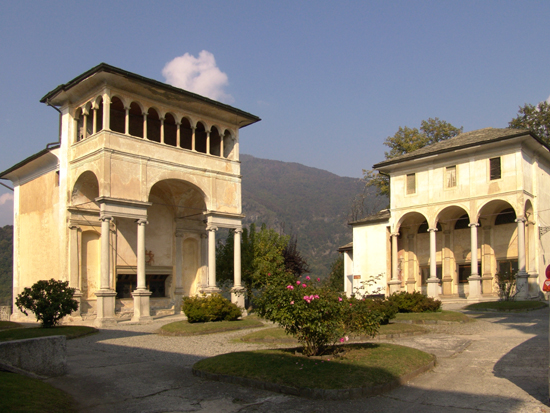The property “Sacri Monti” or “Sacred Mountains of Piedmont and Lombardy” consist of a series of nine separate complexes located in the mountains of Northern Italy (Varallo, Crea, Orta, Varese, Oropa, Ossuccio, Ghiffa, Domodossola, and Valperga). Each complex includes a number of chapels and other architectural features, created in the late 16th and 17th centuries and dedicated to different aspects of Christian belief.
The phenomenon of Sacri Monti began at the turn of the 15th and 16th centuries with the aim of creating places of prayer in Europe as an alternative to the Holy Land (Jerusalem and Palestine). At that time, access to the Holy Land was becoming more and more difficult for pilgrims owing to the rapid expansion of Muslim culture. Initially, three different locations were proposed for the “New Jerusalem”: Varallo in Valsesia, Montaione in Tuscany, and Braga in Northern Portugal. Locations were selected based on similarity of topography to the Holy Land. This phenomenon took root especially after the Council of Trent when the Church adopted the additional role of combating the influence of the Protestant Reformation.
The first example of this phenomenon in Italy was the Sacred Mountain of Varallo, in 1480. Supported by the Bishop of Milan and following ideas that developed from the Council of Trent, it became a model for other Sacri Monti that followed and was dedicated not only to Christ but also to cults devoted to the Virgin Mary, saints, the Trinity, and the Mysteries of the Rosary. Each “sacro monte” began with certain fundamental rules and standards for typology and architectural style but evolved with their own unique art and architecture. Each has a distinct theme or role. At Orta, for example, the complex is dedicated to St. Francis of Assisi with 21 chapels and a garden in a layout essentially unchanged since the 16th century. The Sacro Monte of the Blessed Virgin of Succour at Ossuccio contains 14 Baroque-style chapels on the slope of a mountain leading to a sanctuary at the summit. In the early 18th century, Michelangelo da Montiglio a monk, developed Sacro Monte of Belmonte, Valperga Canavese to recreate Biblical sites from the Holy Land with a circuit of 13 chapels symbolizing the principal incidents in the Passion.
In all of the Sacred Mountains, the greatest Piedmontese and Lombard artists of the period created paintings and sculptures representing the most edifying episodes of the life of Jesus, Mary, or the Saints, constituting a remarkable artistic heritage.


